Valley of the Hear t's Delight
Designing a set and custom glass structures for Felix Lenz video installation at Triennale Milano 2025.
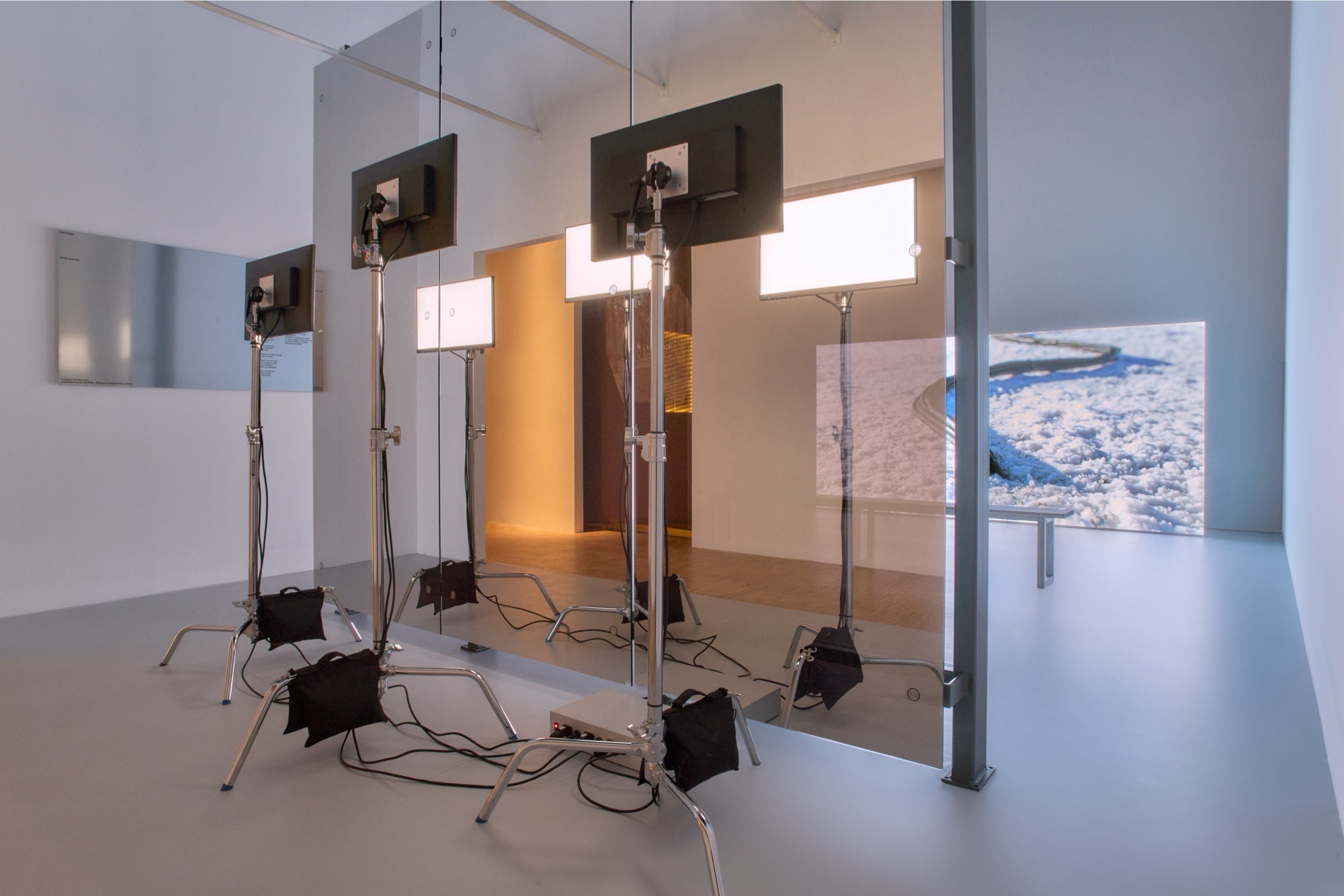
Context
For the Austrian Pavilion at the 2025 Triennale di Milano, I collaborated with artist Felix Lenz on the spatial and technical realization of his 3-channel video installation The Valley of the Heart’s Delight. My responsibilities included the spatial concept and set design for the shoot together with Miriam Daxl, co-design of a custom glass wall structure, and development of a bespoke media control system for synchronizing and managing the three video channels.
Brute Force
The central video work derives from the 30-minute essay film “Brute Force [Exhibition Cut]”, also by Felix Lenz, and investigates the physical implications digital technologies have on the landscape around the Santa Clara Valley, which was once a diverse ecosystem and is now mostly known for being home to the southern part of silicon valley.
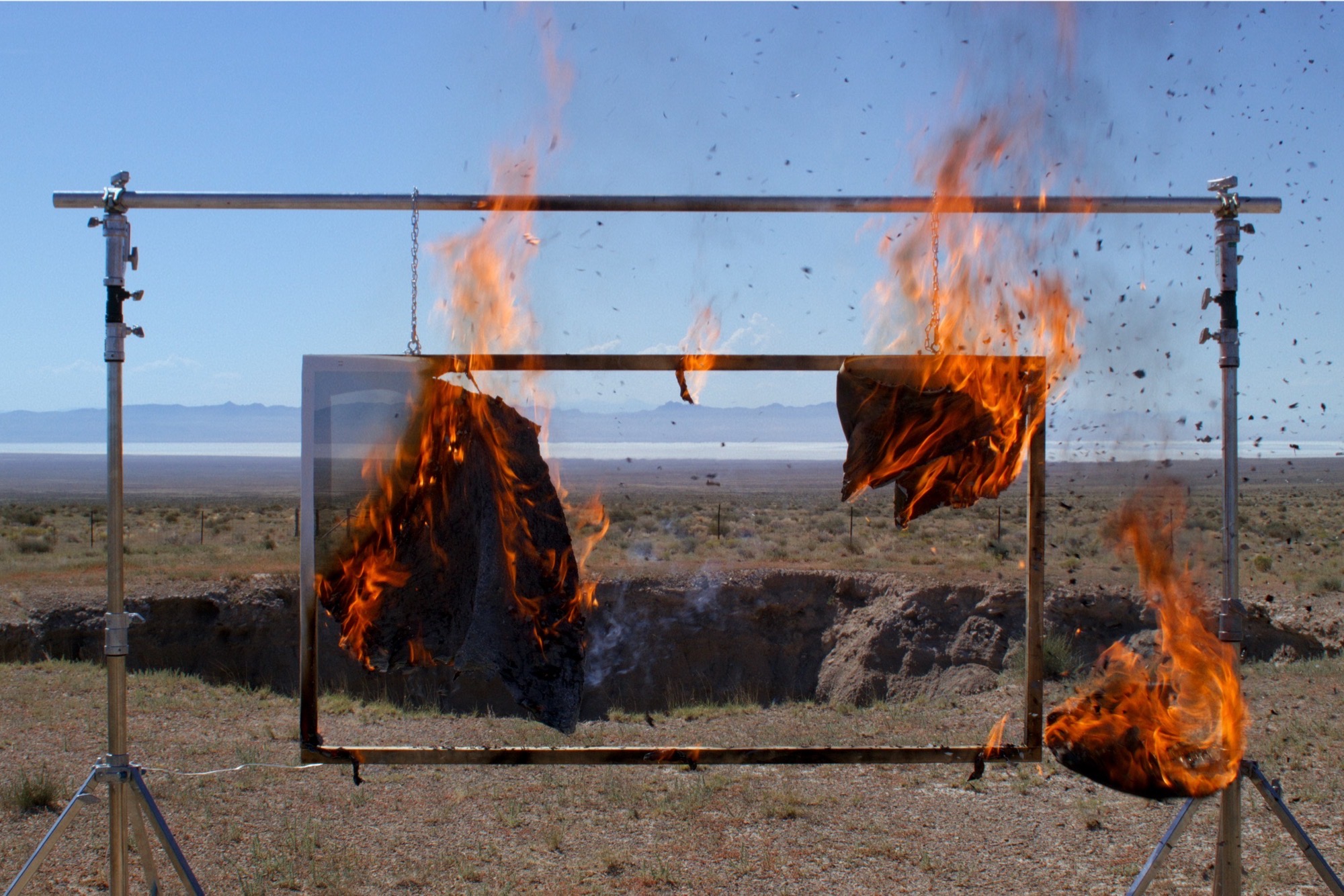
Modern day technologies leave their traces not only within social and political realms, but have very tangible effects on the physical spaces we are inhabiting. Knowledge extractivism is part of a much broader, contextual crisis that exacerbates information capital as well as natural resources. The silicon valley and rare earth mines around the globe are Landscapes that have - prior to their appropriation - existed in unison with the people inhabiting them and are now mostly stripped from their indigenous relevance and reduced to static repositories or development sites for corporate headquarters. This siege of natural spaces is emblematic of the catastrophic power imbalances inherent in digital information technology systems.
Set Design
For the project, in close collaboration with Miriam Daxl and Felix Lenz, we analysed the soil of the Santa Clara Valley in order to - with the help of Selma Mühlbauer - produce a replicate substrate that would convey the historical soil of the land of that area. The artificial nature of this soil-duplicate underlines the sense of simulation that is very prevalent in technology’s serene and sterile aesthetics.
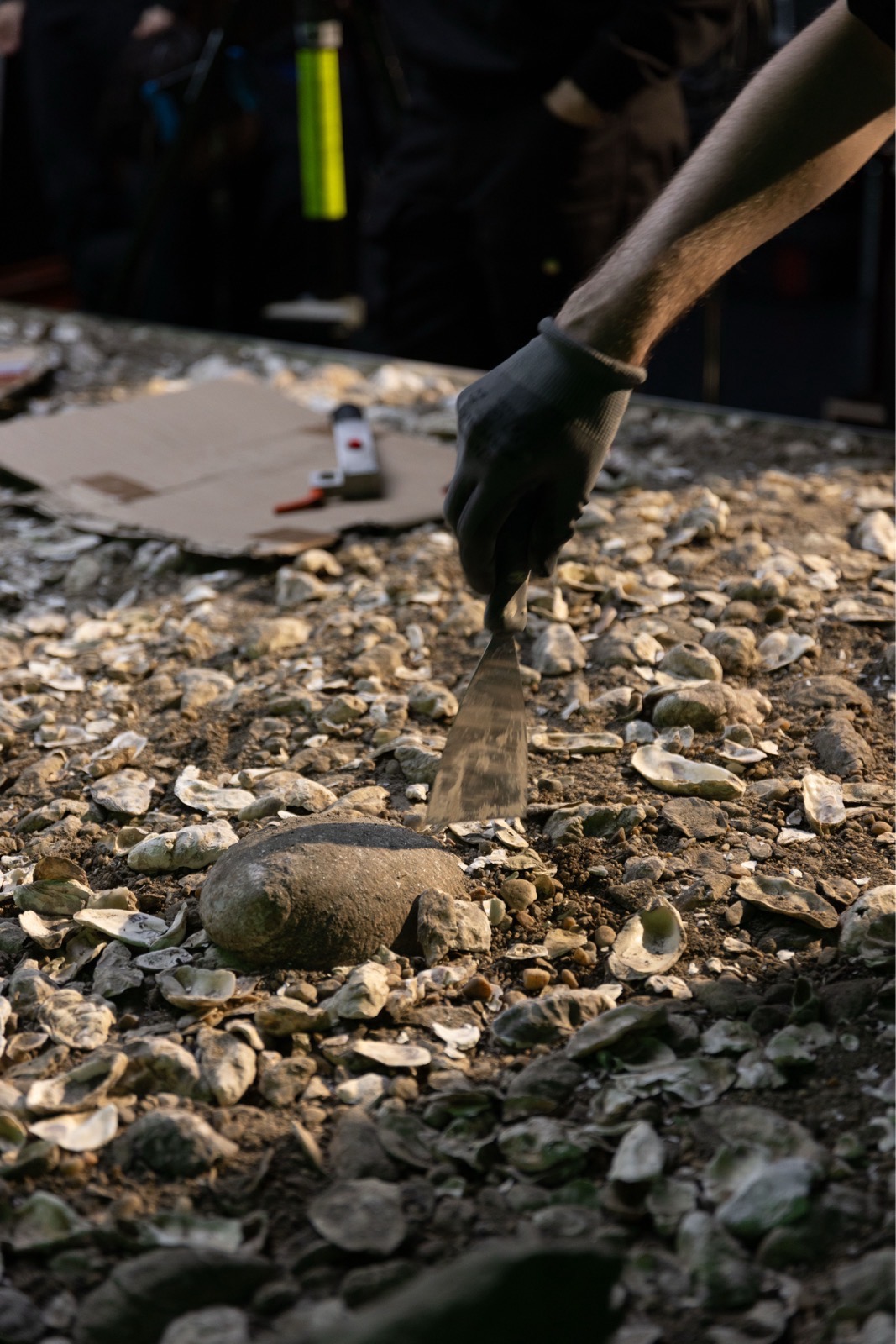
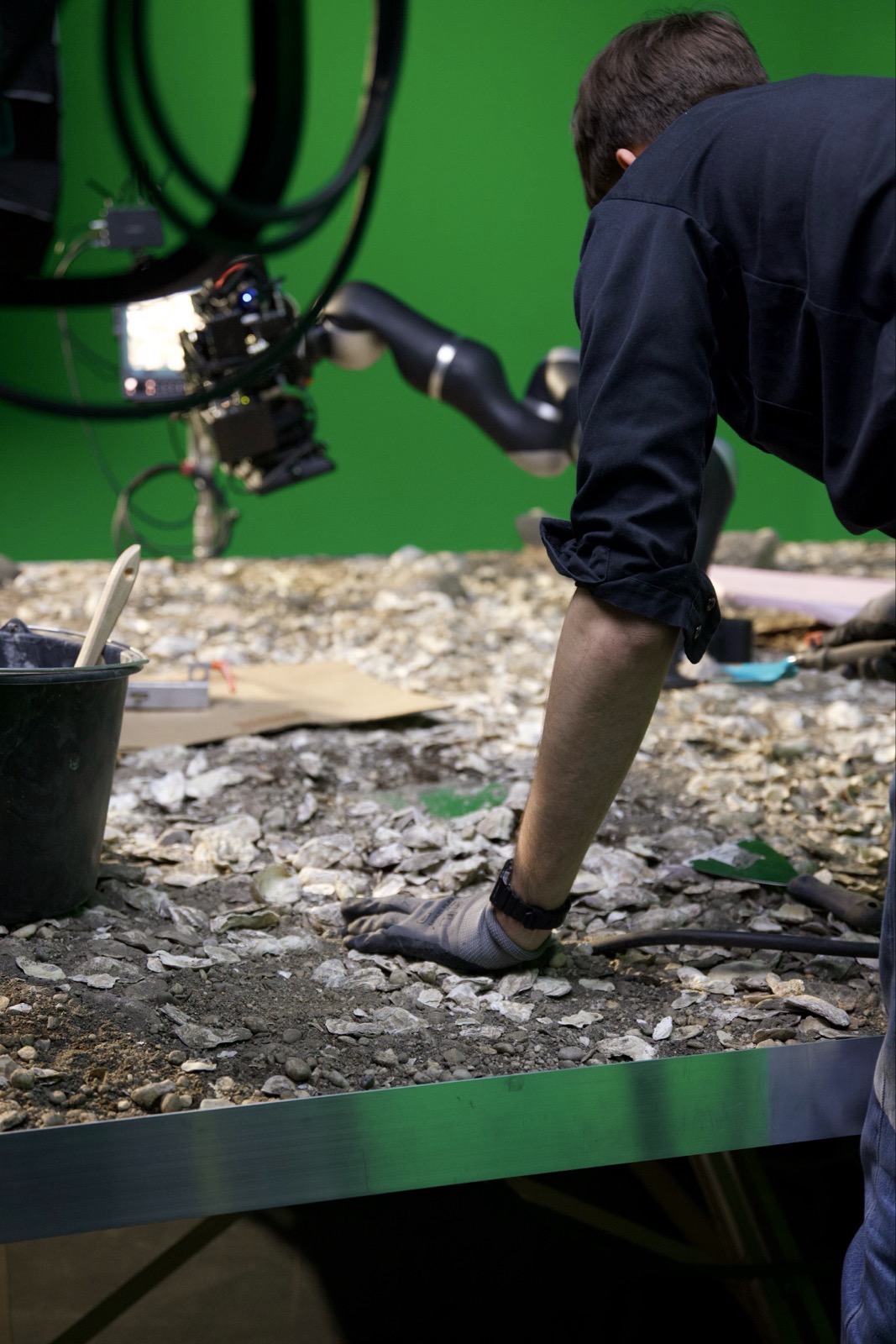
The compounds used for the soil are informed by the basic components of shellmounds which are strongly associated with the history of the bay area. Following in-depth research into the natural mix of materials and many iterations of DIY-soil, we first produced a square meter of said material in order to be scaled up on-set and dressed on specially designed stage elements. To finalise the look and feel of the material, rough stones and shells were added.
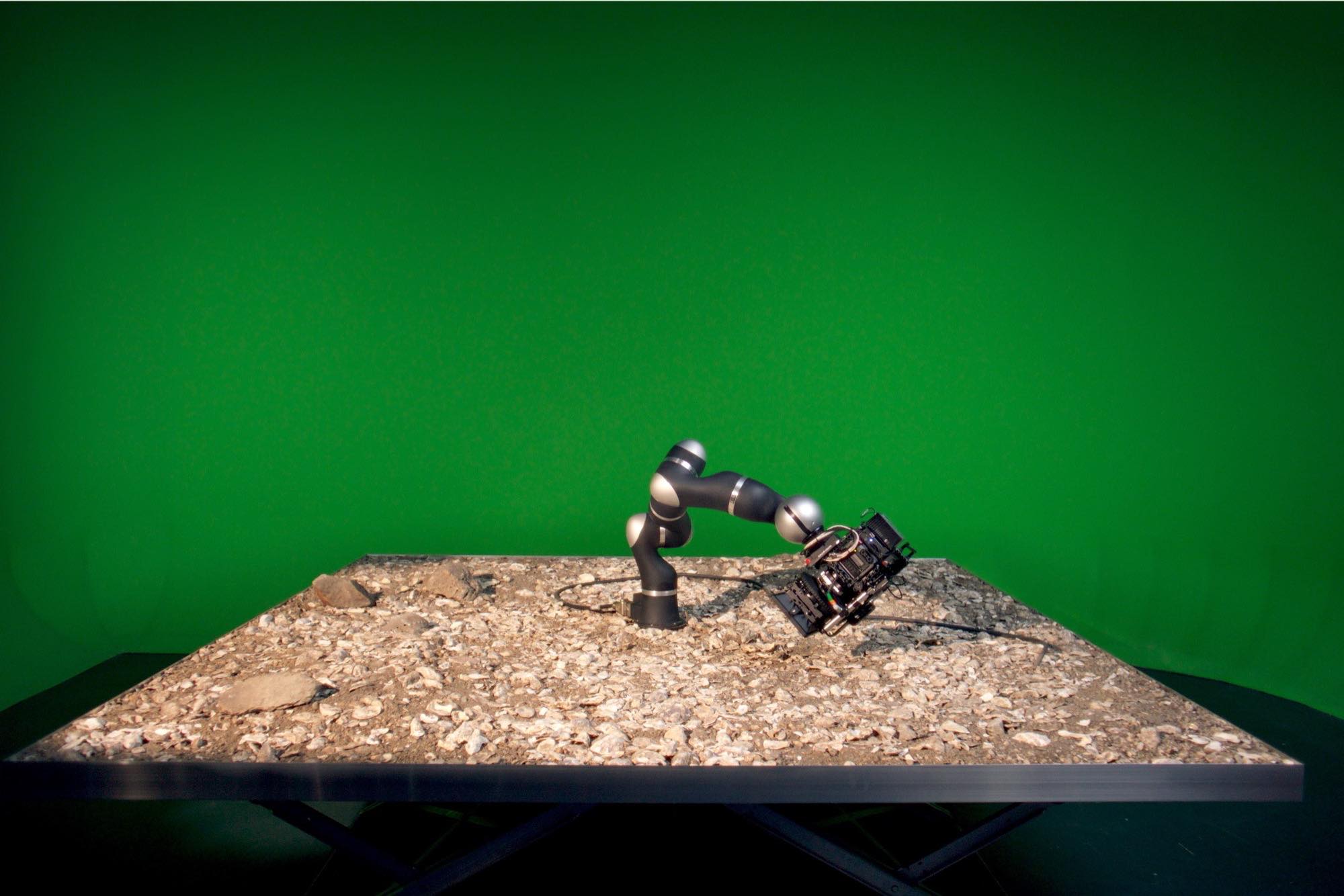
Working closely with the company “Wunderwerk” we were able to capture the multifaceted matrix of this substrate using a camera mounted on a robotic arm. The smooth and orchestrated movement of the camera over the soil underlines the contrast of chaos within natural systems and their inherent entropy, and techtopian ideals of perceived perfection. On the be-soiled stage element, the camera arm becomes a main actor flattening the palpable, 3-dimensional multiplicity of the soil and reality into 2-dimensional images thus shaping the perception of its surroundings in the process.
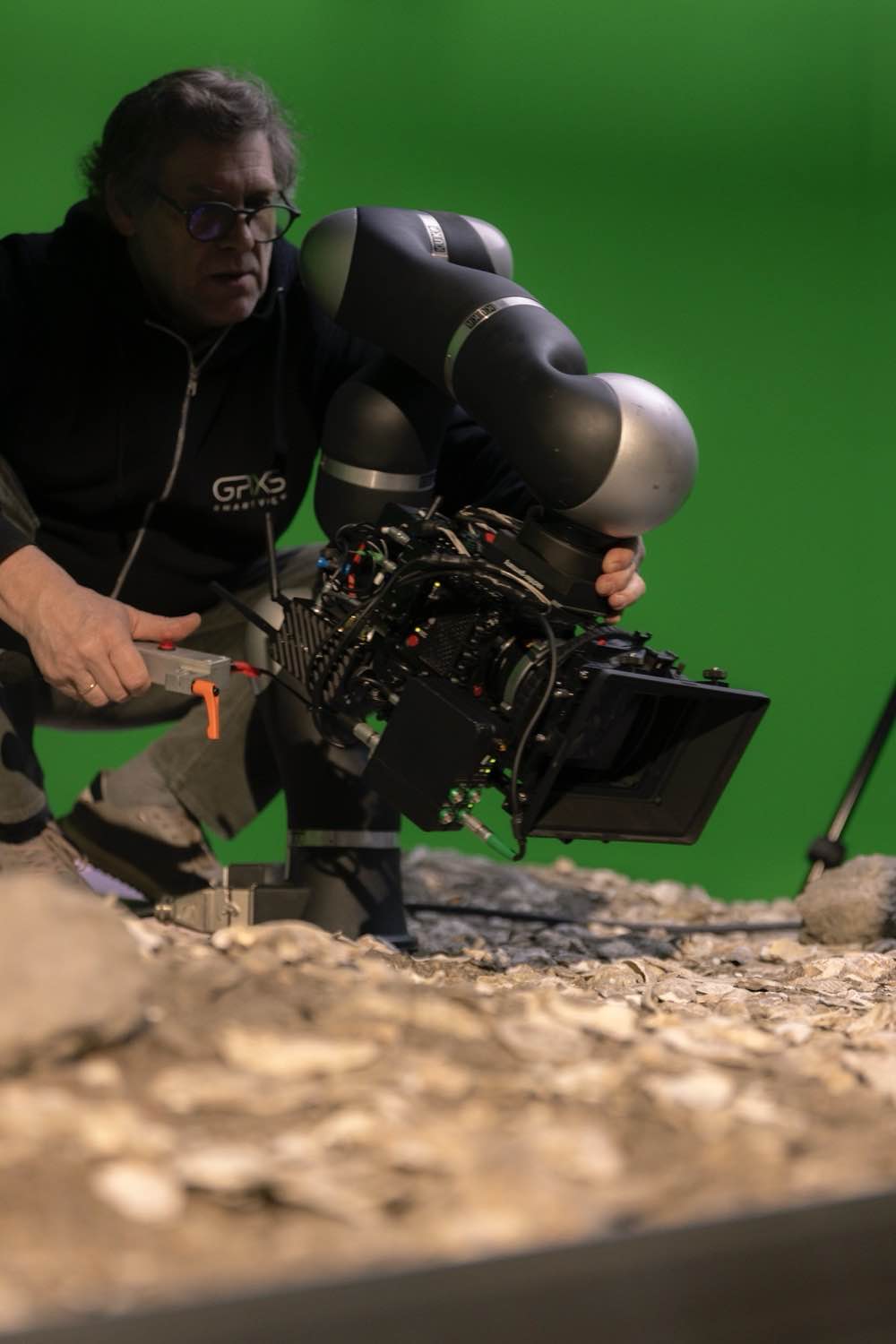
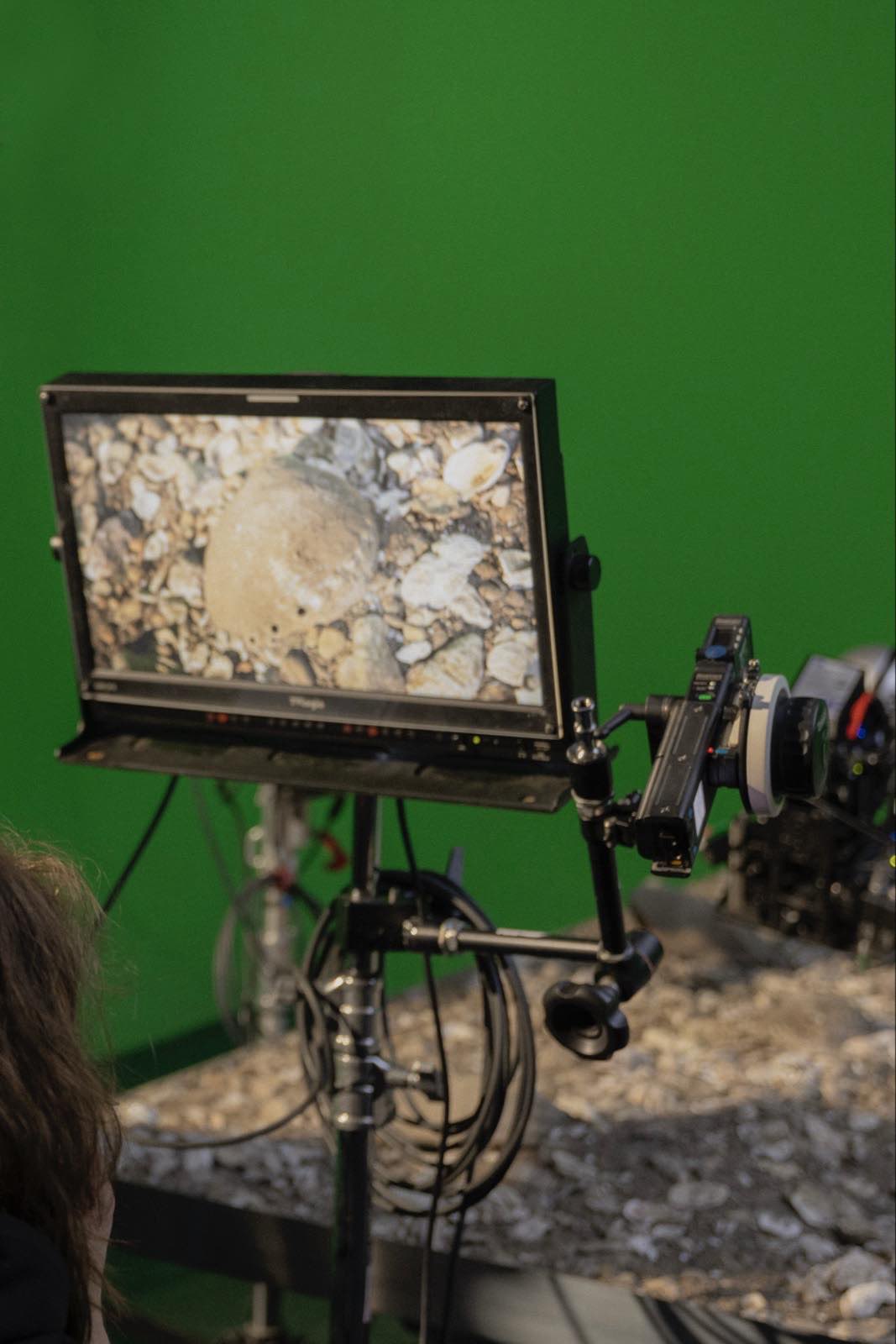
Exhibition Setup
For the bigger exhibition setup a setting that would architecturally represent the power imbalances fostered by the silicon valley was envisioned. In homage to the tech headquarters with their sleek, reflective façades, I co-designed a custom wall element that would merge the properties of a one-sided mirror and a polarising filter, casting a harsh separation between the outside and the inside.
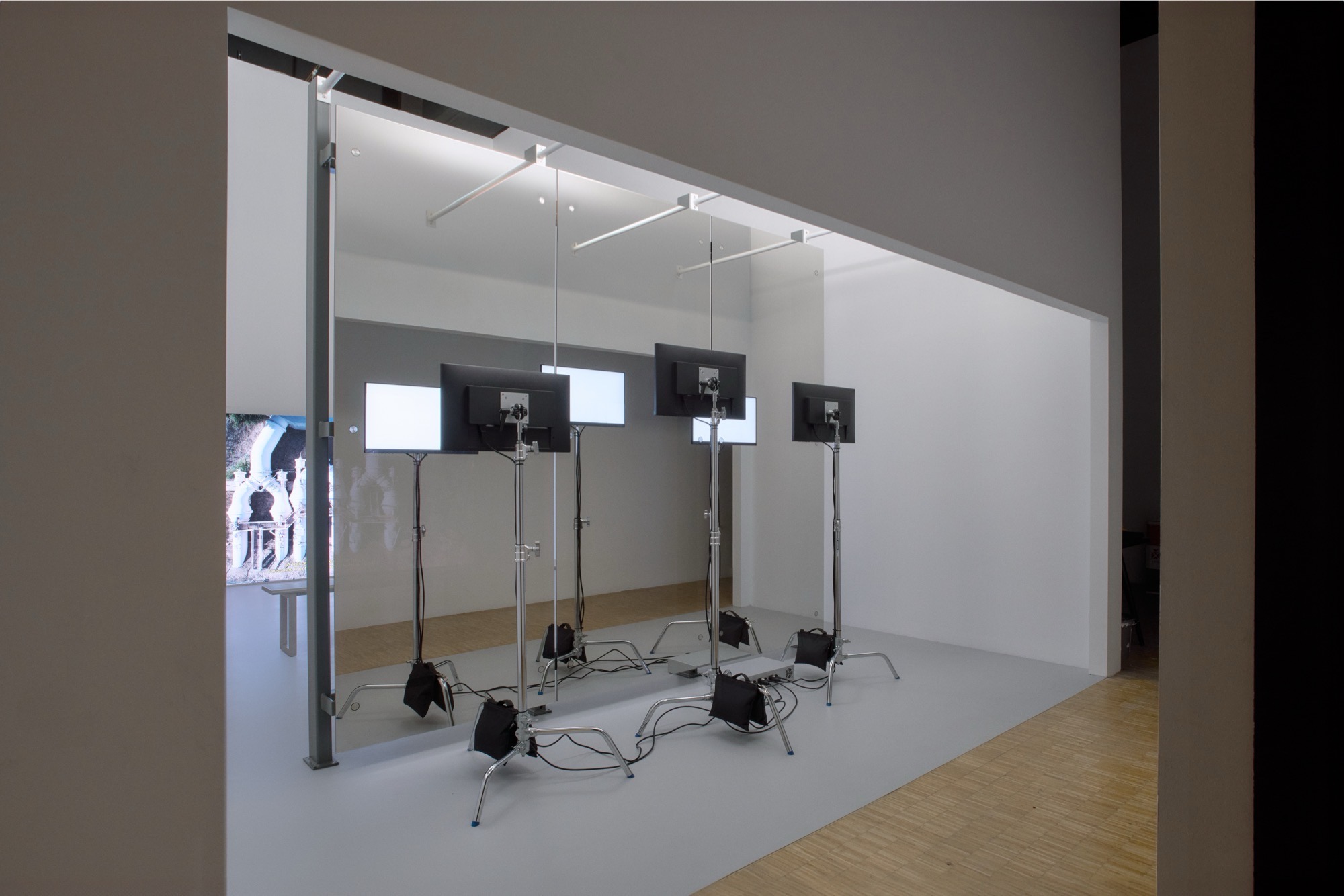
Upon arriving at the installation, the mirrored elements shield off the visitors’ gaze from the main screen and interior of the exhibition space. The three screens in front of the wall - themselves facing away from the viewer - are directly reflected back on the mirror facade. The bright reflection of the monitors, upon first glance, promises additional visual information, but one is quickly disillusioned by the realisation of the screens simply emitting a bright white glow.
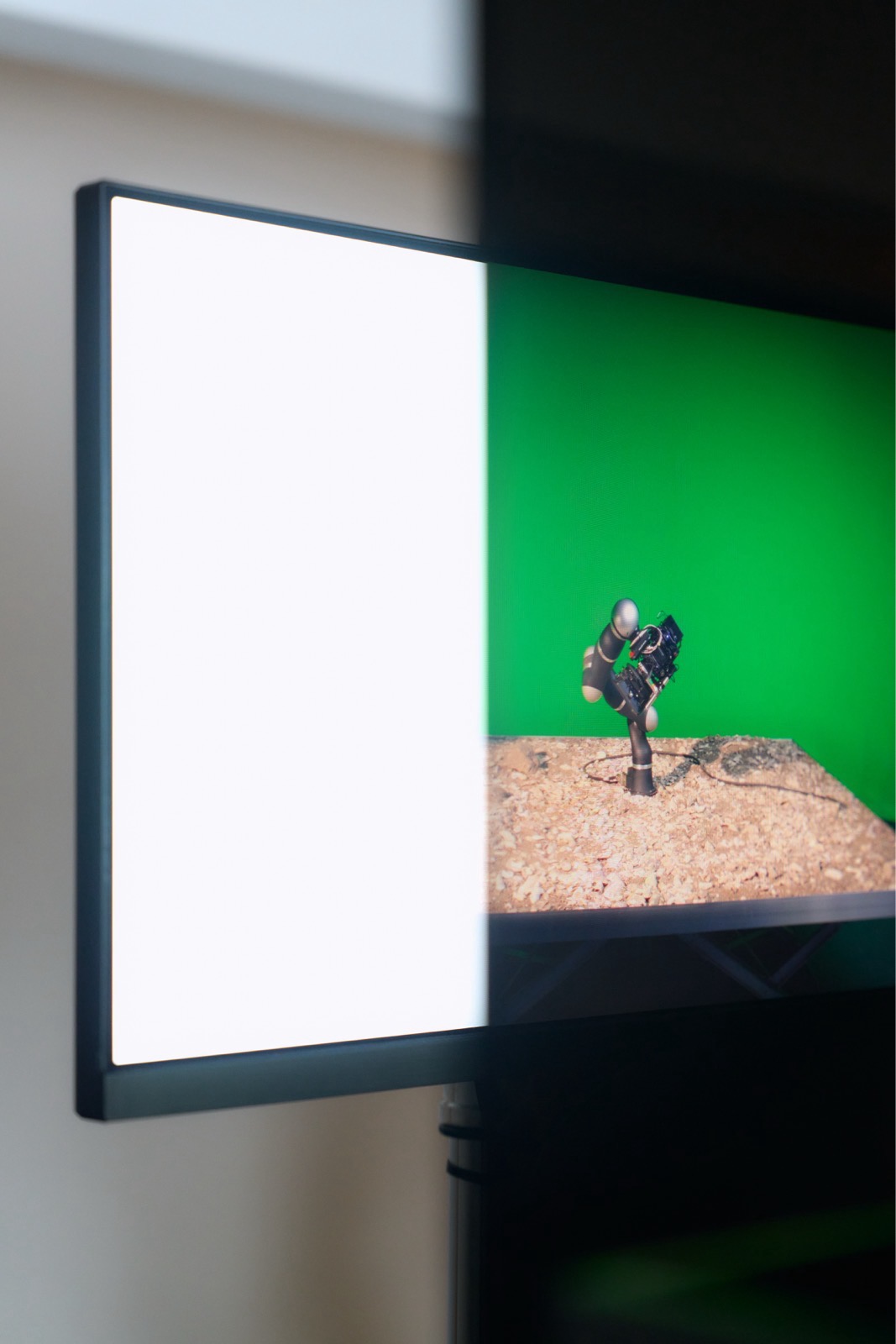
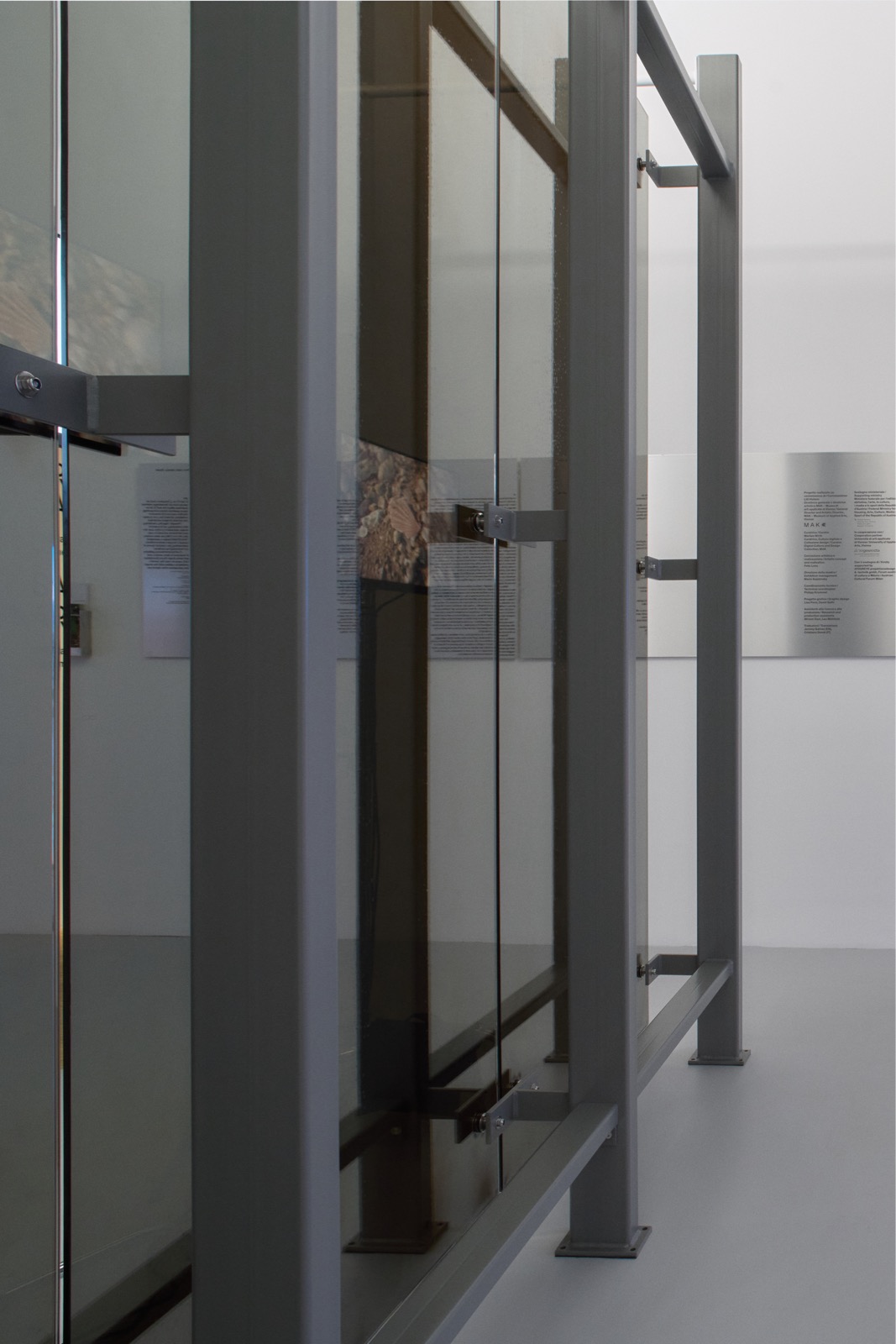
Once inside, the 2.5 by 3m glass wall transforms from mirror to window, revealing what the screens are showing. The visual depictions are laid bare, and all screens offer the viewer insights into the finicky reality of our information technologies. This setup exposes the intricate relationship of corporate entities with their users and the natural resources they rely on. What emerges from the interplay of mirrors and polarised images, is a dialogue that eschews egalitarian ideals and confronts us with the reality of highly filtered and orchestrated flows of information as they are present in on- and offline exchanges with digital technologies and the wider systems that constitute and enable them.
Custom Media Control
The success of the three-channel installation hinges on the simultaneous playback of three streams of video. To achieve maximum accuracy, a custom media solution was designed, running on a synchronisation-script that continuously observes and matches the timecodes of the three players using GPIO-Signals.
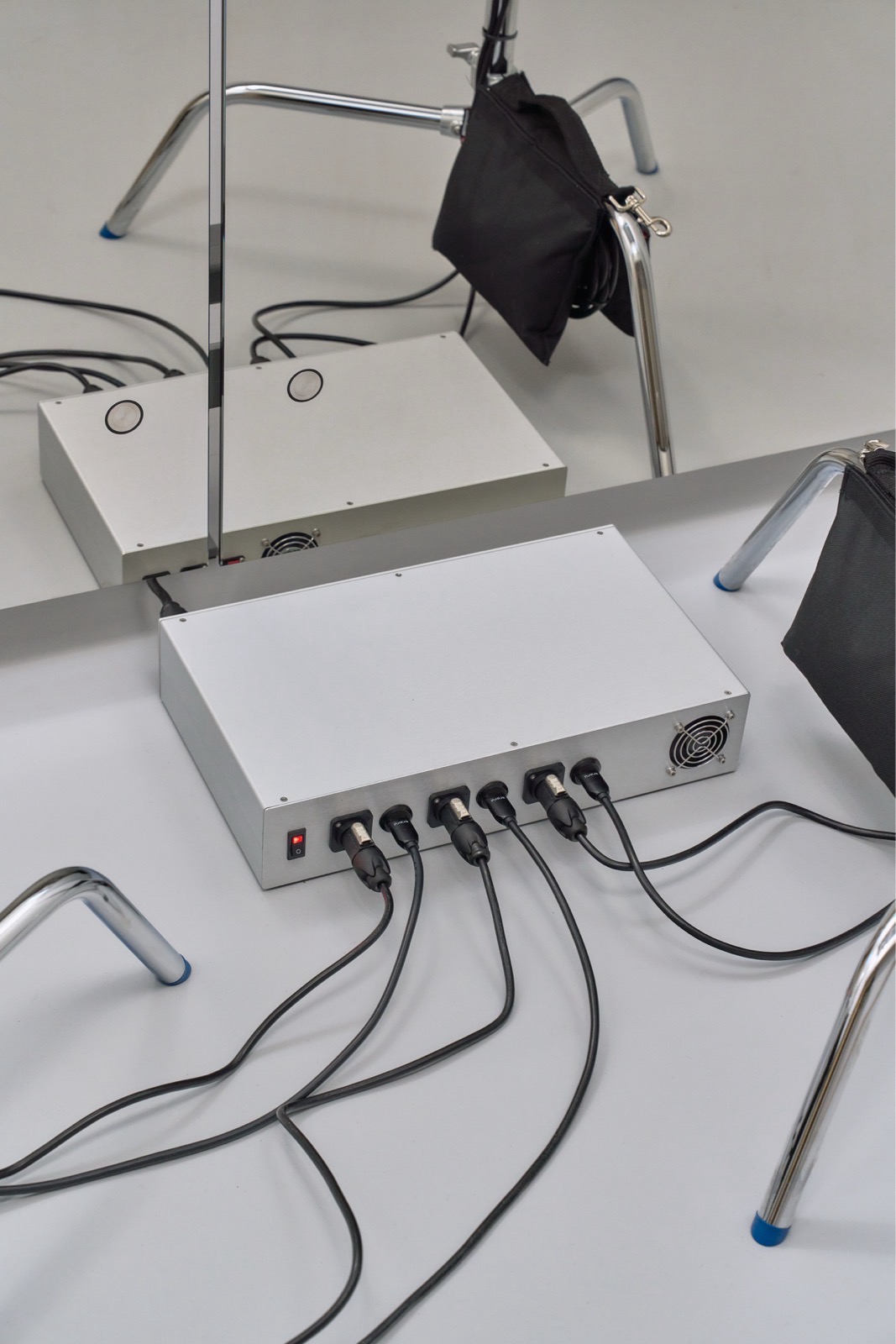
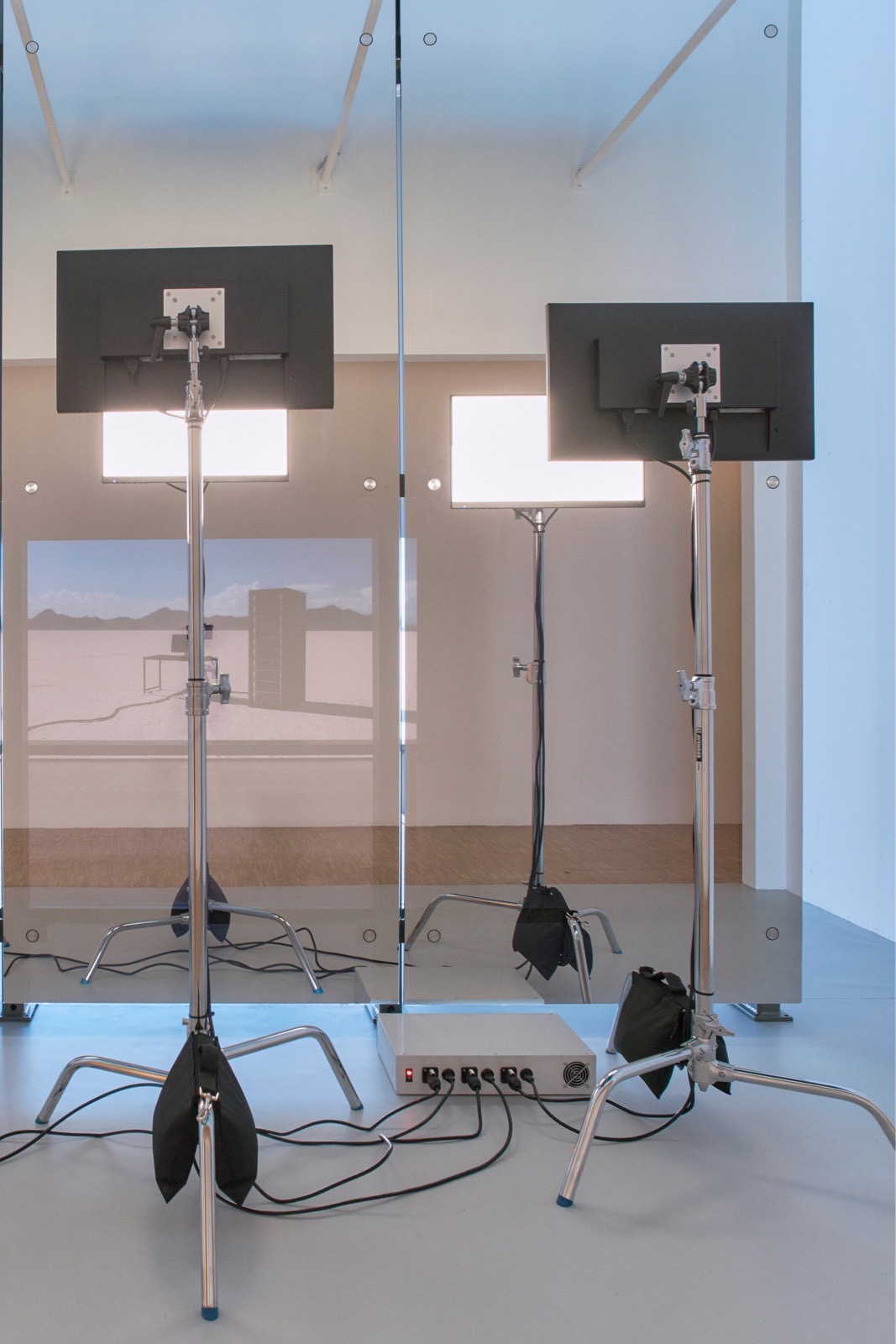
To match the reduced and utilitarian aesthetics of the rest of the exhibition, we designed a custom media box that would house the computational components, as well as affording space for the basic technical requirements of the three screens; a power source and an HDMI signal. Once again, technological complexity is hidden within a sleek, impenetrable mask, granting the work the magical illusion of simplicity so often appropriated within silicon valley’s prerogatives and products.
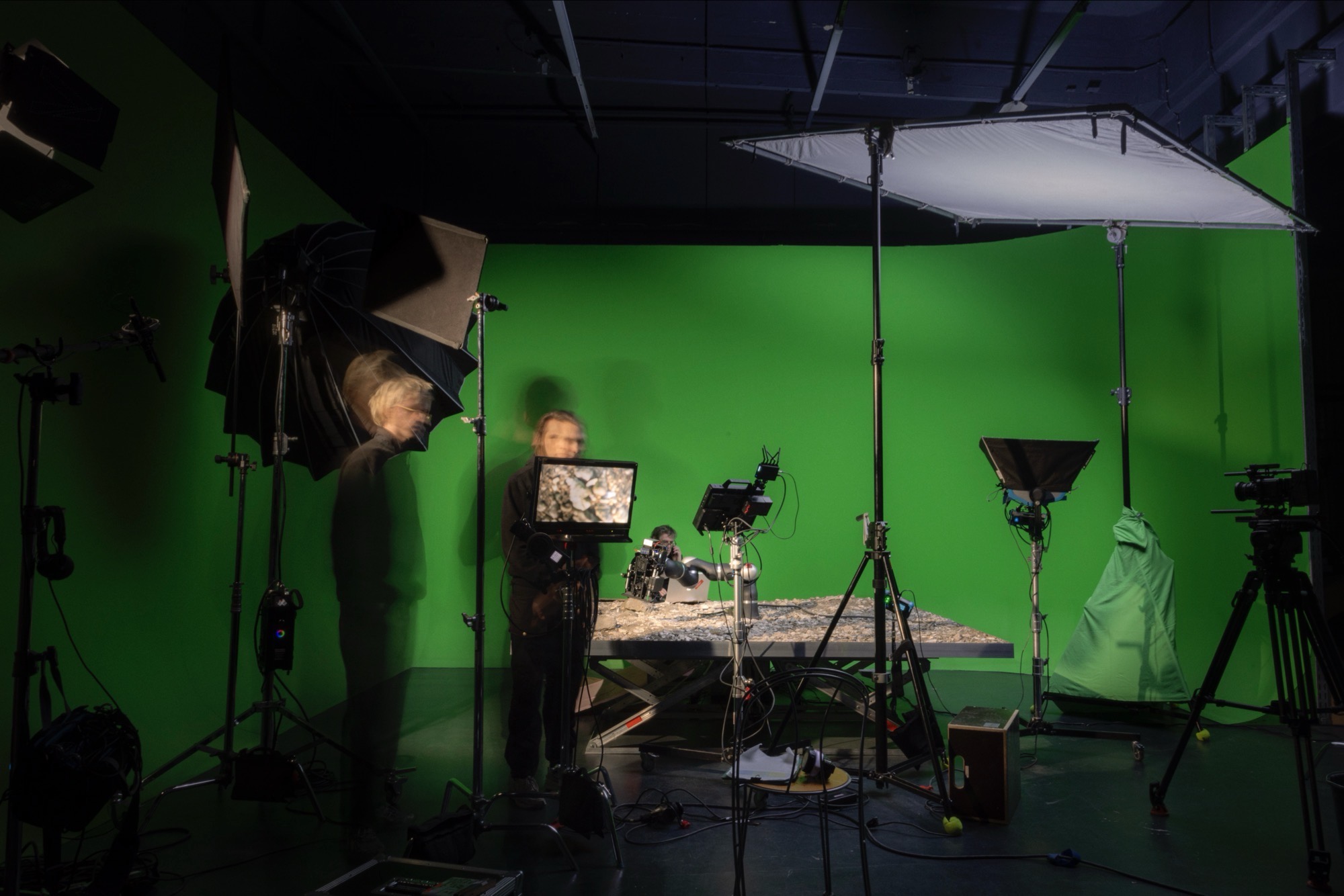
Credits
2025 Triennale di Milano, Austrian Pavilion, commissioned by the Museum of Applied Art in Vienna (MAK), curated by Marlies Wirth. Project lead: Felix Lenz. Set production and design in close collaboration with Miriam Daxl and Selma Mühlbauer. In collaboration with Wunderwerk.